News 1/25/17
Top News
A federal judge sides with the Department of Justice in ruling that the proposed merger of insurers Aetna and Humana should not be allowed because it would reduce competition.
The judge also scolded Aetna for falsely claiming it exited Affordable Care Act marketplaces because of financial losses, noting that the company’s executives followed through on their threats to punish the market if their merger request was denied. Aetna says that wasn’t a threat, just a reflection of market realities. The companies are considering appealing the ruling.
The “smoking gun” document outlining Aetna’s threat to pull out of even profitable ACA markets came from Aetna Chairman and CEO Mark Bertolini, whom HIMSS invited to give the opening keynote address at HIMSS14, where he talked about integrity and the importance of the ACA marketplace that he predicted would sell insurance to 75 million people.
Reader Comments
From Norma Rae: “Re: AHIMA. A server problem from December 30 is still not resolved, as members paid for CEU quizzes that still aren’t available. AHIMA is not answering messages and the phone wait time is nearly two hours.” AHIMA’s website says it has extended the CEU reporting deadline from December 31, 2016 to March 31, 2017 due to the unspecified technical difficulties of an unnamed outside technology vendor.
From Two Dull Dew: “Re: Capricorn Healthcare’s Epic stake. The private equity firm acquired a very small number of shares from an outside shareholder several years ago. It’s not a significant investment even though they list it on their portfolio page.” Several readers provided the same explanation, with one adding the obvious fact that if Capricorn had somehow loaded up on Epic shares, they would be crowing more demonstratively than just quietly listing Epic’s logo on their portfolio list.
From Deck Pitcher: “Re: Theranos. Here is its first pitch deck.” The 2006 slides feature an amateurish logo and the company’s focus on drug companies as a customer base, where Theranos promised to increase drug sales by improving dose customization and monitoring that it hoped would reduce the need for FDA black box warnings. Theranos said it expected to make $50 million per clinical trial by charging $7,500 for each patient enrolled, which it said is up to 30 percent less than drug companies spend in offering testing in physician offices. The company listed as one of its “drivers for success” its management and culture, which we now know were so toxic that they should have had an FDA (or perhaps SEC) black box warning of their own. Thank goodness Theranos pivoted away from convincing drug companies to let it help monitor toxic drugs using its now-discredited lab tests.
From Peace Out: “Re: HIStalk. You have helped me do my job better. I can chit-chat with a CIO and they perk up if I mention that I read something in HIStalk – we can then carry on a well-informed conversation. I have noticed that folks can tell if one reads HIStalk. I mention your site at least three times when I’m at a client site. Your donor-matching program for kids makes my heart sing.” Thanks – you made my day as I do my empty room/empty screen thing.
From PM_From_Haities: “Re: poor customer service in physician practices. At the end of the day, the clinics rates are fixed by their customers who pay via insurance. Why should the clinic change if improving results in almost no change to their compensation? This is why socialism, communism , etc. don’t really work and capitalism with its market functions does. Capitalism has an efficient pricing function that works vis-à-vis the free market. With no real pricing function, guess what? The have no incentive to change. Make that clinic self pay only and I guarantee they would either they find a bigger waiting room or they’d have less patients.” Well said. It is folly to expect people and organizations (even those involving sick people) to behave in any way that decreases their personal benefit. People and companies do what they are paid to do, and in the healthcare system we’ve designed, they are financially encouraged to pack the waiting rooms, overbill, overtreat, and otherwise milk the maximum profit possible from the healthcare abattoir (“immoral” isn’t nearly as much of a motivator as “illegal”). Blame those who designed the game, not those who play it skillfully. As PM notes, your insurance company is the practice’s customer, not you, and you can threaten to seek alternatives to either to see how little they care. Insurers and providers are well aware of how privately lucky you feel you are to have insurance and to get an appointment. There’s plenty more customers where you came from since healthcare creates its own demand.
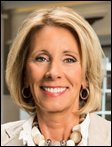
From Edumacation: “Re: Betsy DeVos. She invested $1 million in Theranos, according to disclosure paperwork.” Education secretary nominee Ms. DeVos, whose family billions came from creating the Amway pyramid scheme of selling crappy beauty and nutrition products, perhaps earned an education of her own in sinking a micro-chunk of her family fortune in Theranos.
HIStalkapalooza Sponsor Profile
Since 1975, the Healthwise mission has been to help people make better health decisions. That mission, combined with our innovative spirit, results in health education, technology, and services that make every moment in care matter. By integrating our solutions into your existing workflows, we help you engage patients with consistent, evidence-based health information for improved outcomes, increased satisfaction, and lower costs. Visit us at HIMSS in booth #1523 and check out our demo stations for Point of Care, Care Coordination, Digital & Web Experiences, and Care Transformation. Find out more or schedule a one-on-one meeting at HIMSS at healthwise.org/himss17.
HIStalk Announcements and Requests
Thanks to the several readers who asked about offer of a free pass to the Healthcare IT Marketing and PR Conference in Las Vegas April 5-7. The quick-on-the-trigger CEO who asked about it first got the pass and promises to follow up with a write-up afterward. I had just the one pass to offer for free, but others can at least save $300 by registering using promo code “histalk.” Many of my sponsors came on board due to the efforts of PR and marketing advocates and I appreciate their support.
I’ve been reclaiming my online life by muting Facebook and Twitter connections who just can’t stop spouting political bitterness or extending unsolicited political opinion despite not having any obvious qualifications commensurate with their partisan zeal. I’m also tuning out folks who repeatedly link to biased or sensationalistic news sources, which I define as pretty much all of them other than the New York Times, Washington Post, NPR, The Wall Street Journal, ABC/CBS/NBC, and the news wires. We have happily and indulgently cocooned ourselves off from civic responsibility with niche TV channels, Netflix, and Facebook and thus are collectively not really capable any longer of courteous, informed discussion. The American formula of offsetting a shortage of factual knowledge with an excess of emotional conviction doesn’t generally work (notable exceptions exist). Calling someone stupid or evil just because they have different opinions seems pretty stupid and evil.
Webinars
January 26 (Thursday) 1:00 ET. “Jump Start Your Care Coordination Program: 6 Strategies for Delivering Efficient, Effective Care.” Sponsored by Healthwise. Presenters: Jim Rogers, RN, RPSGT, director of healthcare solutions, Persistent Systems; Jason Burum, chief client officer, Healthwise. This webinar will explain how to implement a patient-centered care coordination program that will increase quality as well as margins. It will provide real-world examples of how organizations used care coordination to decrease readmission rates, ED visits, and costs.
February 1 (Wednesday) 1:00 ET. “Get your data ready for MACRA: Leveraging technology to achieve PHM goals.” Sponsored by Medicity. Presenters: Brian Ahier, director of standards and government affairs, Medicity; Eric Crawford, project manager, Medicity; Adam Bell, RN, senior clinical consultant, Medicity. Earning performance incentives under MACRA/MIPS requires a rich, complete data asset. Use the 2017 transition year to identify technology tools that can address gaps in care, transform data into actionable information, and support population health goals and prepare your organization for 2018 reporting requirements.
Acquisitions, Funding, Business, and Stock
GetWellNetwork acquires Seamless Medical Systems, which offers a patient check-in and waiting room solution.
Integration technology vendor Redox raises $9 million in a Series B funding round, increasing its total to $13 million.
The drug industry’s trade group launches a multi-million dollar, feel-good ad campaign in trying to position itself as a responsible contributor to societal health following a series of embarrassing price-gouging news stories, most recently involving Mylan’s EpiPen. The group’s CEO makes reference to, “less hoodie, more lab coats” in trying to distance itself from non-member companies and former Turing Pharmaceuticals CEO Martin Shkreli, who in response quickly created a “Pharma Skeletons” web page to highlight the pricing misdeeds and tax-dodging “relocations” to Ireland of some of the trade group’s members.
The Advisory Board Company returns responsibility for the maintenance and marketing of its Quality Compass infection surveillance and antimicrobial stewardship software to its original developer, Vecna Patient Solutions. Vecna offers patient access software but is probably best known for its VGo Telepresence robot. The Advisory Board Company announced the restructuring of its healthcare business three weeks ago, when it said that it will exit its still-profitable businesses of care management workflow, nursing workforce, and infection control analytics.
The Chan Zuckerberg Initiative will acquire Meta, an artificial intelligence-powered search engine for medical journal articles. The charity, founded by Facebook CEO Mark Zuckerberg and his wife Priscilla Chan, MD, will give researchers free access.
Sales

In Canada, 656-bed Humber River Hospital will upgrade to Meditech’s Web EHR.
Ballinger Memorial Hospital (TX) chooses CPSI’s Evident EHR.
Announcements and Implementations
Ability Network announces its FHIR-based API program that allows partners (clearinghouses, payers, RCM companies, and EHR vendors) to connect to its platform for eligibility lookups, claim submission, and acknowledgement and remittance download.
DirectTrust says that 98 million Direct messages were exchanged in 2016, with the number of Direct-issued addresses increasing 24 percent in the year.
Government and Politics
Former Acting CMS Administrator Andy Slavitt warns that replacement plans for the ACA often label condition exclusions as “patient choice,” highlighting this just-passed Minnesota proposal that allows insurers to sell policies that exclude coverage for cancer, emergency services, diabetes, and outpatient services. Sponsor Rep. Steve Drazkowski (R-Mazeppa) says the plan he championed is “a cure for the regulatory disease” that allows insurers to offer a la carte coverage that doesn’t include all 68 federal mandates. Critics ask the logical question – what crystal ball should consumers consult in buying plans that don’t cover yet-unknown but horrendously expensive conditions? Long-timers will recall when well-intentioned patients would present “insurance cards” pretty much like these policies — they covered basically nothing since they were ridiculous voluntary discount membership cards they bought from late-night TV infomercials in confusing them with being insured.
Here’s something to ponder – if marketplace plans go away, a lot of solo creative people who contribute to the economy (authors, musicians, entrepreneurs who are building companies) will either go back to being uninsured or will have to return to full-time jobs to earn the privilege of paying for health insurance. The ACA isn’t perfect, but making insurance available only to the employees of companies seems to discourage entrepreneurial pursuits that hold a lot more economic promise than chasing long-gone assembly line jobs. It’s a step backward if people have to remain underemployed because seeking better fortunes would preclude them from getting insurance that covers their existing medical conditions. I still recall the anguish of having to lay off a long-time hospital employee who had stuck with her not-so-great job only because she was uninsurable elsewhere because of breast cancer, and I still curse the name of the new VP who was so anxious to earn suck-up points with his executive peers that he got fooled into taking on her entire transferred team without a corresponding budget, thus getting the executioner duties turfed off on him by far more skilled but equally gutless players. He of course wasn’t available when security and I walked them off the property.
The Congressional Budget Office says the federal budget deficit and tepid economic growth will run the national debt up another $10 trillion in the next 10 years, much of that driven by healthcare and Social Security entitlement programs. CBO still says the economy is solid and job growth is imminent. The national debt stands at around $20 trillion, most of it held by investors. These numbers don’t take into account the $1 trillion infrastructure investment and tax cuts planned by the administration.
Technology

Health services in Norway are planning to move from Microsoft’s Windows Phone to Android because of high cost and low availability.
Cedars-Sinai chooses eight startups for the next class of its accelerator boot camp:
- Cerebro Solutions (labor management)
- Enso
- FIGS (medical apparel e-commerce sales)
- Frame Health (identifying non-adherent patients via personality analysis)
- Healthcare TTU (cash flow and AR analytics)
- HealthTensor (artificial intelligence)
- Noteworth (device interoperability)
- ReferralMD (referrals)
Other
In England, ongoing delays in implementing Cerner Millennium at Calderdale and Huddersfield NHS Foundation Trust have increased the expected cost from $6 million to $15 million. The overrun is due to the cost of backfilling the positions of clinicians assigned to the project and a harder-than-expected data migration from legacy systems.
In Australia, someone accidentally leaves a backup generator’s switch turned off, with its eventual failure during a power outage causing a hospital blackout that required evacuating ICU patients and that also destroyed its fertility center’s 50 frozen embryos.
NIST publishes results of a perception and experience study on EHR copy-and-paste, but I’m not going to describe it since it involved a ridiculously small sample size (five nurses and four doctors), all of them using the military’s AHLTA system that’s already being replaced with Cerner. Basically the study supports previous recommendations that (a) text that has been copied and pasted should be clearly identified, and (b) EHRs should display the “chain of custody” of the information when the user wants to see it. As most studies fail to address, it doesn’t question why the EHR requires or desires information to be stored multiple times. My guess is that someone worries that it will be missed, so I’ll fall back to my usual recommendation that EHRs should allow every user to flag individual text as being important in their care decisions rather than just dumping massive amounts of text that must be mined by each clinician for anything relevant. I like the idea of a chart being treated like a long paper document where I could use a highlighter to mark just the important sections, then date and initial them for later lookup by me or by someone else (maybe I just want to see which parts the cardiologist found useful). EHRs were designed to force users to input discrete data elements, but that’s for the convenience of non-clinicians.
I’m fascinated that one of the hottest hospital-related debates in England has always been that hospitals charge for parking. A parking app vendor files a Freedom of Information request to determine that hospital visitors were fined $17 million in a single year. Thus evolved my latest can’t-miss money-making scheme: an independent offsite parking operation that shuttles visitors back and forth directly to hospital campus locations like an airport shuttle. I would never park in an airport garage – it’s silly to pay 3-4 times the cost of an offsite shuttle that will drop me and my bags directly at the gate instead of leaving me to drag my stuff through a poorly lit garage where I have to remember where I parked. I would be equally unlikely to choose hospital garage or valet parking given a low-friction alternative.
Sponsor Updates
- Obix by Clinical Computer Systems posts a video covering its implementation at Yoakum Community Hospital (TX).
- Besler Consulting releases a new podcast, “The Future of MACRA in 2017.”
- Biz Journals includes Caradigm President and CEO Neil Singh in its list of “New Seattle-area CEOs of 2016.”
- CenterX will exhibit at the NCPDP Workgroup Meeting February 1-3 in San Antonio.
Blog Posts
- Understanding MACRA – Are You Eligible? (Optimum Healthcare IT)
- ACO Participation Associated with Improvements in HACs (Definitive Healthcare)
- A Look into 2017: New Administration and OCR Audits (AdvancedMD)
- What’s the Value of a $71,838 EOB for a Hip Replacement? (Arcadia Healthcare Solutions)
- Achieving Real-Time Respiratory Depression Surveillance of Post-Surgical and PCA Patients (Bernoulli)
- The CMIO Role in the Era of Value-Based Care (Catalyze)
- Big Changes with the 21st Century Cures Act (CareSync)
- 5 Tips for Submitting the Best PA Request for Your Patient (CoverMyMeds)
Contacts
Mr. H, Lorre, Jennifer, Dr. Jayne, Lt. Dan.
More news: HIStalk Practice, HIStalk Connect.
Get HIStalk updates. Send news or rumors.
Contact us.




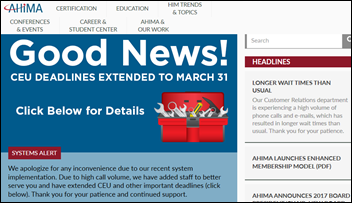
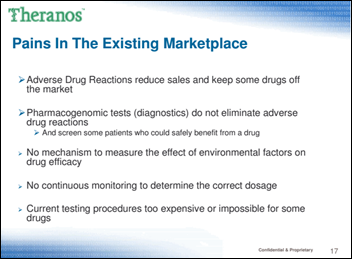

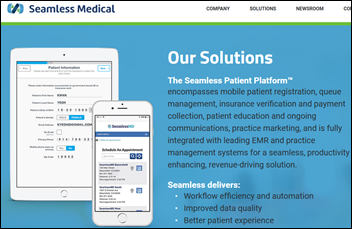


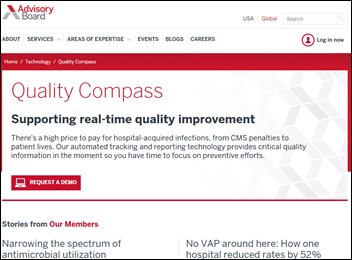

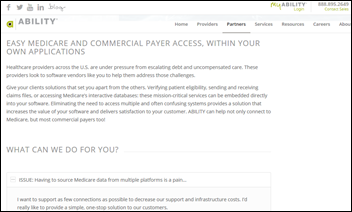
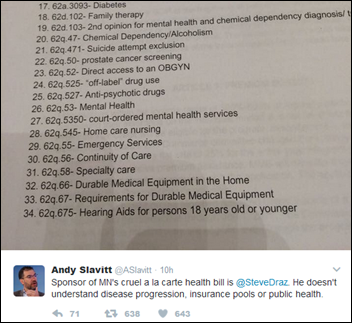





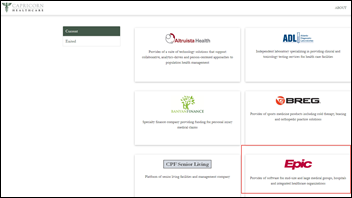



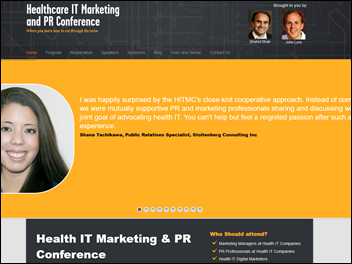
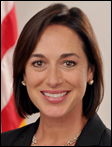

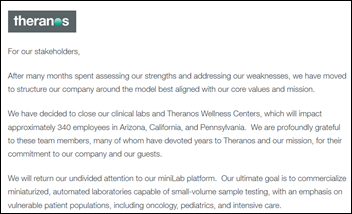
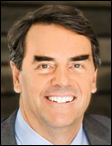




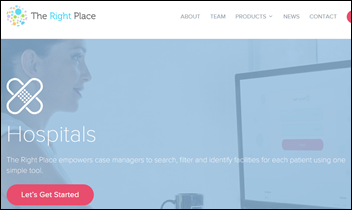





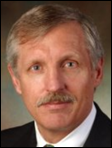
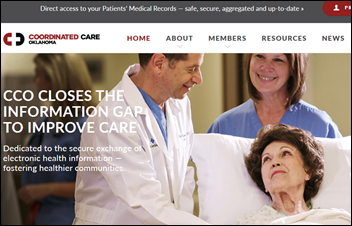



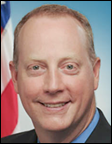









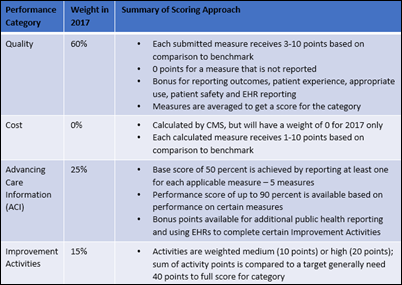








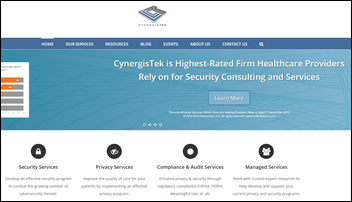

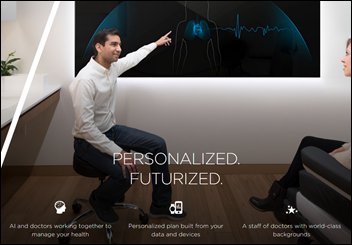
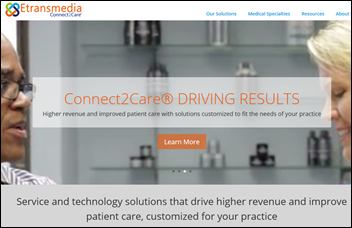

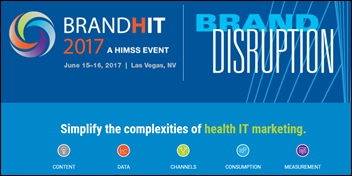


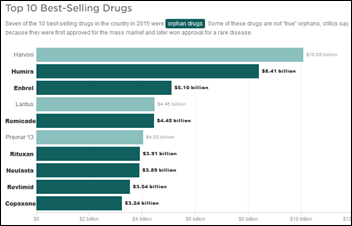
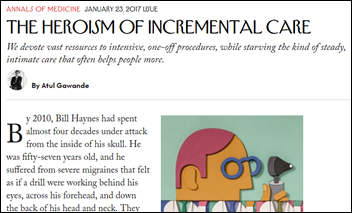




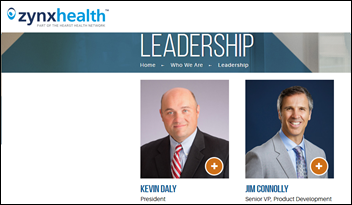




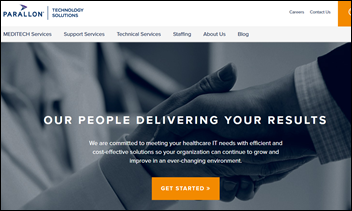



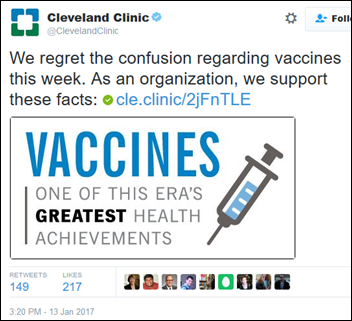
"A valid concern..." Oh please. Everyone picks the software they like and the origin of that software is an afterthought.…